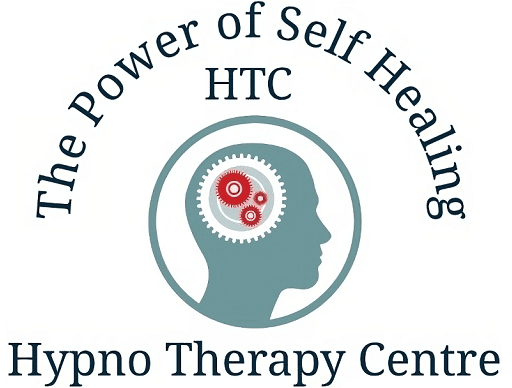
Learning
What is Hypnotherapy and its Benefits?
Hypnotherapy is a therapeutic approach that utilizes the state of hypnosis to promote positive change in individuals. It involves the use of hypnosis as a tool to access the subconscious mind and bring about therapeutic effects. Unlike hypnosis, which refers to the state of mind, hypnotherapy specifically focuses on the therapeutic application of hypnosis.
During a hypnotherapy session, a trained and certified hypnotherapist guides you into a relaxed state known as a trance. In this state, your mind and body can unwind, and tension can be released. While in hypnosis, your brain enters a trance-like state with reduced peripheral awareness but heightened focus. You remain fully aware of your surroundings and the hypnotherapist’s voice, retaining memory of what is being said.
Hypnotherapy sessions involve the use of positive suggestions tailored to your specific needs. These suggestions, communicated by the hypnotherapist, are aimed at influencing your subconscious mind in a beneficial way. Clients often report feelings of calmness, focus, lightness, and relief from pain during and after the session.
Benefits of hypnotherapy include helping individuals cope with pain, stress, anxiety, and various other conditions. It can be a valuable tool in assisting individuals in making long-lasting positive changes in their lives. However, it’s important to note that for conditions like pain, stress, and anxiety, Cognitive Behavioral Therapy (CBT) is typically considered the primary treatment. Consulting a practitioner skilled in both modalities can provide comprehensive support.
Different Methods Used by Clinical Hypnotherapists
Clinical hypnotherapists employ various techniques and approaches to facilitate change during hypnotherapy sessions. These methods may include:
1. Suggestion Therapy: This technique involves delivering positive suggestions directly to the subconscious mind, encouraging the adoption of new behaviors or beliefs. It aims to reframe negative thought patterns and promote positive changes.
2. Regression Therapy: Regression involves guiding individuals back to past experiences or memories that may be influencing their present thoughts, emotions, or behaviors. By exploring and resolving these underlying issues, individuals can find healing and resolution.
3. Parts Therapy: This approach involves identifying and communicating with different parts or aspects of an individual’s personality. By understanding and harmonizing conflicting parts, individuals can achieve greater integration and alignment.
4. Neuro-Linguistic Programming (NLP): NLP techniques focus on the relationship between language, patterns of thought, and behavioral patterns. By utilizing specific language patterns and techniques, hypnotherapists can help individuals reprogram their thoughts and behaviors.
5. Hypnoanalysis: This method involves deeper exploration of subconscious thoughts, emotions, and memories to uncover and address underlying issues. By resolving unresolved conflicts or traumas, individuals can experience profound healing and transformation.
These are just a few examples of the methods used by clinical hypnotherapists. The specific approach utilized depends on the individual’s needs and the hypnotherapist’s expertise.
Hypnotherapy is a therapeutic modality that utilizes the state of hypnosis to promote positive change. It involves the use of various techniques to access the subconscious mind and deliver positive suggestions tailored to an individual’s needs. Hypnotherapy can provide significant benefits in managing pain, stress, anxiety, and supporting personal growth. Consulting a trained and certified hypnotherapist can help individuals navigate this powerful therapeutic approach.



Hypnosis versus Meditation: Understanding the Difference
When exploring the realms of hypnosis and meditation, it becomes evident that there are similarities between the two practices. Those who delve into the study of hypnosis may encounter aspects of meditation, and vice versa. This raises the question: What sets hypnosis apart from meditation? Are they distinct practices or essentially the same? In this discussion, we will delve into the disparities between hypnosis and meditation to gain a better understanding of their unique qualities.
Why Meditation Is Not Hypnosis
1. Defining Meditation: Before examining their differences, it’s crucial to establish a definition for meditation. In this context, meditation refers to the act of sitting down, closing your eyes, controlling your breath, and clearing your mind for a specific duration.
2. Light Trance State: While some forms of meditation can induce a trance state, these are often considered light trances that occur unintentionally.
3. Lack of Intent: The differentiating factor between meditation and hypnosis lies in their intent. Meditation lacks the focused and directed approach necessary to bring about profound positive changes or significant psychological and physical effects. It does not induce catalepsy or increase the permeability of the mind’s Critical Faculty to suggestions.
4. General Benefits: Although meditation offers numerous incredible benefits, they tend to be more general in nature rather than specific. Meditation can make you feel great, but it cannot single-handedly help you quit smoking in a single session.
Why Hypnosis Is Not Meditation
1. Directed Unconscious Mind: In hypnosis, the individual actively directs their unconscious mind to solve problems or facilitate personal changes. This contrasts with meditation, which involves emptying the mind of concerns.
2. Focus on Positive Improvements: Certain meditation practices closely resemble self-hypnosis, but they often lack the critical component of focusing the mind on positive improvements. Allowing the mind to wander aimlessly during meditation may expose it to negative stimuli or lead to a loop of negative thoughts.
3. Harnessing the Power of Trance States: Hypnosis utilizes trance states in a more powerful manner by harnessing the unconscious mind’s potential. By directing this power, rapid and profound changes can occur, while still providing the energetic benefits associated with meditation.
Hypnosis vs. Meditation: Embracing Both
1. The Power of Meditation: Meditation has a rich history, deeply rooted in various religious and spiritual practices. It has been utilized for thousands of years in religious services, daily rituals, and wellness practices such as yoga. Meditation offers an array of benefits and has gained recognition even in scientific circles.
2. Understanding Hypnosis: Despite the skepticism often associated with hypnosis, it has transformed the lives of thousands of individuals worldwide. While stage hypnosis can appear outlandish and entertaining, private hypnosis sessions have proven to be a powerful tool for personal transformation, enabling people to quit smoking, improve their health, lose weight, and alleviate stress.
3. The Coexistence of Hypnosis and Meditation: Hypnosis and meditation do not need to be seen as conflicting practices. They are distinct tools with different purposes, catering to individual needs. Like any useful tools, they can be employed whenever necessary, complementing each other to enhance one’s well-being and personal growth.
Both hypnosis and meditation possess the potential to improve one’s life significantly. While meditation provides general benefits and a sense of well-being, hypnosis offers a more targeted and powerful approach to personal transformation. However, there is no need to choose between the two, as they serve different purposes and can coexist harmoniously. Individuals should embrace the practice that resonates with them and utilize the appropriate tool whenever needed.
